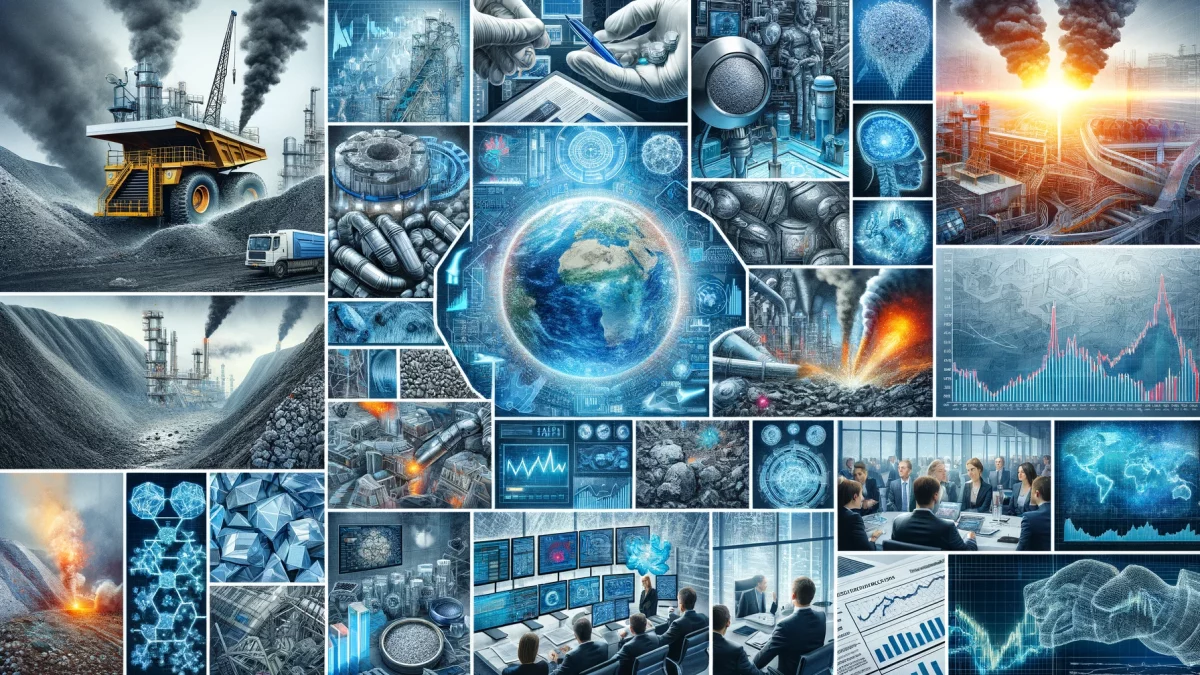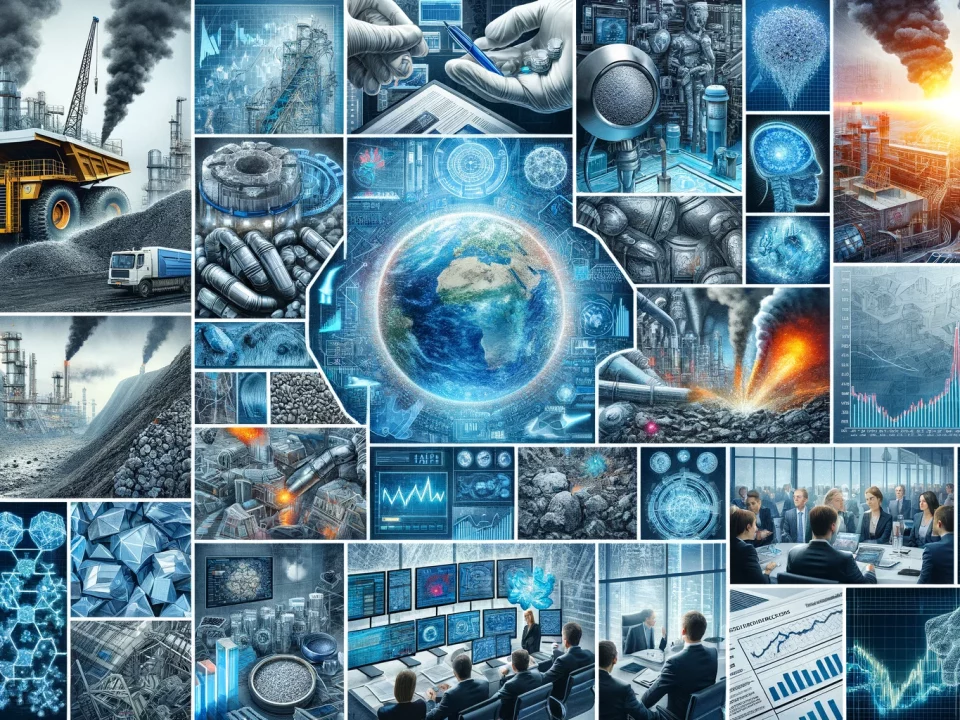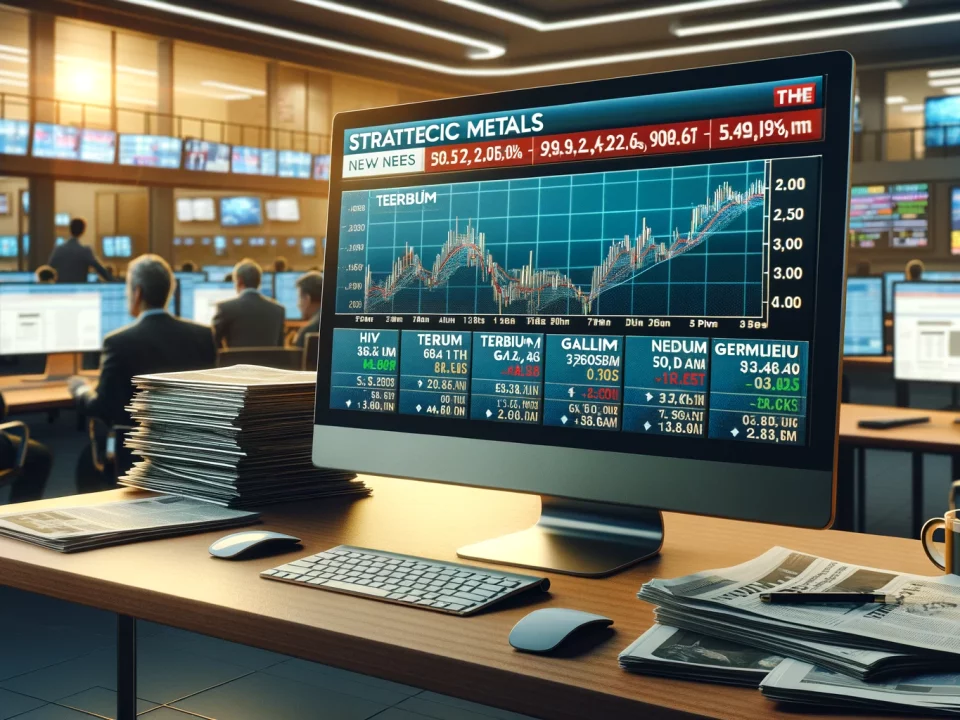
Weekly News Review May 6 – May 12 2024
May 12, 2024
Weekly News Review May 20 – May 26 2024
May 26, 2024Welcome to our weekly news round-up.
USA TO HIKE TARIFFS ON CHINESE ELECTRIC VEHICLE AND OTHER CLEAN-ENERGY PRODUCTS:
Electric vehicle rates are set to quadruple to 102.5 percent. The US solar industry is spared for now.
The United States will reportedly hike tariffs on Chinese electric vehicles (E.V.s) and other clean-energy goods.
According to the Wall Street Journal, President Joe Biden will announce the details, including the final rates and the targeted industries, this week, according to sources familiar with the matter. The levy on Chinese E.V.s will reportedly quadruple from 25 to 102.5 percent, while the other areas and rates are not public yet.
According to Bloomberg, the White House signaled the exemption to the industry in advance, the U.S. solar industry that imports machinery and other parts used to manufacture panels from China is set to be spared.
The Biden Administration reviewed the tariffs on Chinese goods implemented under President Donald Trump over two years and considered a hike last winter already.
THE US IS CURRENTLY NOT A KEY MARKET FOR CHINESE ELECTRIC VEHICLE COMPANIES:
Despite the massive increase in the levy on E.V.s, the move will likely have a minimal impact as the U.S. is not a key destination for the People’s Republic’s E.V. industry. The Atlantic Council compiled data on the matter, revealing that the European Union is the largest recipient, accounting for roughly 40 percent of Beijing’s battery-powered E.V. exports in 2023, while the U.S., Mexico, and Canada together only accounted for 6 percent. The Chinese E.V.s imported to the U.S. in 2023 only cost $368 million.
Chinese carmakers could bypass U.S. import tariffs by building assembly plants in North America, for example, in the U.S.’ southern neighbor Mexico. BYD, one of the largest Chinese E.V. companies, is looking for a suitable location for a plant in the country.
According to Reuters, BYD emphasized that the plant would serve the Mexican market only and does not intend to ship the vehicles to other countries.
U.S. officials are skeptical, however, and argue that such facilities in neighboring countries could “provide a back door to China” to sidestep tariff policies. Following pressure from the U.S., the Mexican Government denied Chinese companies subsidies and tax credits for investment in E.V. production earlier this year.
EUROPE’S LARGEST RECYCLING PLANT FOR RARE EARTH MAGNETS BEGINS OPERATIONS:
Heraeus Remloy promises the same quality with less CO2 consumption.
Wind turbines, electric cars, consumer electronics: Magnets, often made from rare earths like neodymium, have become integral to many technologies. Demand and a growing dependency on China, the largest producer, are constantly increasing. Currently, 98 percent of the permanent magnets required for the traction motors of electric cars come from China.
One way to reduce the need for imports is to recycle components from devices that have reached their end of life (EOL).
According to data from the consulting firm Adamas Intelligence, the EOL products discarded in 2023 contained around 21,000 tons of powerful neodymium-iron-boron magnets. However, less than one percent of these are returned to the material cycle.
Therefore, there is huge potential here. The European Union’s Critical Raw Materials Act will also see fixed quotas for the recycling of strategic raw materials come into force by 2030. This is where the technology company Heraeus comes in, with a new recycling plant for rare earth magnets that has just started production.
The Heraeus Remloy division has developed a new process that promises the same quality of end products but requires significantly fewer resources than the primary production of magnets. According to the press release, the plant’s processing capacity in Bitterfeld-Wolfen, Saxony-Anhalt, is 600 tons per year but could be increased to 1,200 tons.
BATTERIES, CRITICAL MINERALS, MAGNETS – US EXPANDS TARIFFS ON CHINESE IMPORTS:
After the levy on E.V.s became known in advance, the White House published the final list of updated tariffs.
Yesterday, we reported on U.S. President Joe Biden’s plans to hike import tariffs on Chinese electric vehicles and other clean-tech goods.
On Tuesday, the White House published a concrete list of updated and to-be-imposed tariffs. Besides the quadrupled levy on E.V.s, multiple new additions and hikes are part of the list. While the rates on semiconductors and solar cells will double from 25 to 50 percent each, tariffs on lithium-ion batteries for E.V. and non-EV usage and battery parts will more than triple from 7,5 to 25 percent. Tariffs on particular steel, aluminum, and personal protective equipment will be 25 percent, from zero to 7.5 percent.
In addition, new tariffs will be imposed on natural graphite, certain other critical minerals, and permanent magnets at a rate of 25 percent, while the levy on syringes and needles will reach 50 percent. The tariff on magnets especially marks a shift in Biden’s strategy, as the President refrained from imposing such in 2022. The list’s publication marks the end of a four-year-long review of the Trump-era policy.
LIST WILL GRADUALLY BE IMPOSED – MAGNETS IN 2026
According to the White House, the tariffs will affect imports from the People’s Republic worth $18 billion and are part of Biden’s plans to restore the supply chains of critical minerals, semiconductors, and clean-tech goods. All tariffs are set to be imposed this year, with the rates on semiconductors following in 2025 and natural graphite, non-EV lithium-ion batteries, and permanent magnets in 2026. The latter presents one of the most difficult challenges, as China accounts for roughly 90 percent of rare earth magnet production, according to data by research company Fastmarkets.
There are currently two large-scale projects in the U.S. to construct domestic magnet manufacturing facilities. M.P. Materials, the operator of the only rare earth mine in the U.S., Mountain Pass, recently secured $58.5 million in government support to advance the construction of its magnet factory in Fort Worth, Texas.
In addition, German rare earth magnet manufacturer Vacuumschmelze’s U.S. subsidy E-Vac Magnetics will receive tax credits of 111.9 million dollars to accelerate the construction of its first U.S. factory in South Carolina. Both facilities are planned to commence operations in 2025.
CANADA BASED NEO PERFORMANCE MATERIALS: ESTONIAN MAGNET PLANT CONSTRUCTION “ON TIME AND BUDGET”
The specialty metals and materials company reports solid results for the first quarter.
Despite a challenging market environment for rare earths, Canadian-based Neo Performance Materials reported substantial results for the first quarter of 2024. The company, which focuses on metals, alloys, and other special materials, posted a $10.8 million adjusted EBITDA for the first quarter compared to $0.8 million in the same period last year.
Despite declining revenue from $135.5 million in the first quarter of 2023 to $128.7 million in the first quarter of 2024, Neo is confident in reaching double-digit adjusted EBITDA growth in the entire year. The company cited the strong performance of its rare metals business unit, which comprises tantalum, niobium, rhenium, hafnium, gallium, and indium, as a primary factor for the successful quarter.
In contrast, the revenue of Magnequench, Neo’s rare earth magnet business unit, declined due to soft demand in the magnetic powder business, even though traction motor volumes experienced a recovery recently.
Key developments during the quarter include closing its light rare earth separation facility in Zibo, China, in April to divest from low-return investments and positive initial results from the 2023 finalized closure of midstream niobium and tantalum operations in its separation plant in Sillamäe, Estonia.
In addition, earlier this month, Neo signed a Memorandum of Understanding with Australian-based Meteoric Resources for the offtake of rare earth raw material from Meteoric’s Caldeira project in Minas Gerais, Brazil. The material will be separated in Neo’s separation facility in Estonia, which will supply the permanent magnet manufacturing plant currently under development nearby. The company said the facility is about halfway into construction and within the original budget.
CANADA AND THE US ANNOUNCE FIRST JOINT COOPERATION IN STRATEGIC METALS:
Two Canadian companies developing critical minerals deposits will receive $24 million.
Canada and the United States are gearing up efforts to bolster their critical minerals supply chains. On Thursday, Natural Resources Canada and the U.S. Department of Defense announced the first co-investment in the field. A combined $24 million will be awarded to the two Canadian critical mineral deposit developers, Fortune Minerals and Lomiko Metals.
This marks the first joint financing of projects since the two North American neighbors finalized an action plan on critical minerals in 2020. The plan aims to establish secure and reliable supply chains for essential minerals in North America. Fortune Minerals is developing a cobalt-gold-bismuth-copper project in Canada’s Northwest Territories. Lomiko Metals holds rights to two graphite and lithium projects in the Eastern province of Quebec.
On Tuesday, the U.S. announced sweeping import tariffs on Chinese goods, including critical minerals, to boost domestic production and incentivize the formation of alternative supply chains outside industry-leading China. Canada and other partner countries, such as resource-rich Australia, could eventually benefit from the tariffs.
While most raw materials from Down Under are currently processed in China, emerging refining capacities in other nations could shift this.
SOUTH KOREA AND CHINA DISCUSS CLOSER COOPERATION:
South Korea has an internationally recognized high-tech industry, but only a few raw materials needed to produce chips and other components are available within its borders. For some time now, the Asian country has been increasing efforts to set its supply of gallium and rare earths on a broader footing as its dependence on imports is increasing. Seoul is now seeking closer cooperation with China of all countries, the raw materials giant from which many countries want to emancipate themselves in terms of resources.
As The Korea Herald reports, South Korean Finance Minister Choi Sang-mok and Zheng Shanjie, chairman of China’s National Development and Reform Commission (NDRC), discussed ways to cooperate better on critical minerals and key industries such as renewable energy. It was the first economic ministerial meeting between the two countries since August 2022; they had already agreed to deepen trade and economic ties in November last year.
IEA REPORT: MORE INVESTMENT IN STRATEGIC METALS NEEDED –
Low price levels are not a sign of an all-clear.
Last year, the International Energy Agency (IEA) presented its first market report on the raw materials required for the global energy transition. The latest version of the report was published today, Friday. It states that the prices for many critical minerals – especially those used to manufacture batteries – will have returned to pre-pandemic levels in 2023.
According to the IEA, this may sound good at first, but it could mask the risk of supply bottlenecks, as the demand for resources for the energy transition is growing: the total market is likely to more than double to 770 billion U.S. dollars by 2040 if climate targets are to be met. However, falling prices are making new mining projects less attractive for investors. Given the long lead time, this shifts the risk of insufficient supply. Continuous investment is necessary to prevent this in the medium and long term.
In the case of rare earths, the financing of new projects has increased despite the fall in prices. According to the agency, the geographically very concentrated extraction would be put on a broader footing through new mines outside China. However, further processing would remain limited to just a few market participants. Of all the minerals essential for the energy transition, rare earths used to manufacture magnets are at the most significant risk of geographic concentration of their processing. These include neodymium and terbium.
SUSTAINABILITY: UK INVESTS MILLIONS IN ROBOT-ASSISTED PRODUCTION –
The research center at the University of Birmingham aims to facilitate the transition to a circular economy and improve the efficiency of critical material usage.
The United Kingdom wants to make industrial production more sustainable and circular with the help of robots, intelligent automation, and artificial intelligence. In this regard, a research center will be set up at the University of Birmingham. It will receive roughly $44 million in funding over the next seven years. $14 million will come from government funding, with the remainder being provided by partners from research and public administration.
The project aims to use critical resources such as rare earths more efficiently and improve Re-X manufacturing processes such as reuse, repair, remanufacturing, and recycling. According to the press release, these are currently much more labor-intensive than conventional manufacturing, so many materials end up in landfills or are disposed of elsewhere instead of being put to a new use. Companies could save around $29 billion annually through cost-effective or cost-neutral optimizations in this area.
While the environmental impact of global material consumption is set to double over the next forty years, the annual volume of waste is expected to increase by 70 percent by 2050. What is needed are “radical new approaches to manufacturing” and a move away from manufacturing new products and disposing of them at the “end of life,” said Professor Samia Nefti-Meziani, Director of the leading Birmingham Robotics Institute. The research team will initially focus on a few areas: energy, medical devices, and electric drives.
Given the growing demand for critical materials, the U.K. is working more intensively on expanding the circular economy, mainly focusing on rare earths. The University of Birmingham is already involved in these efforts.
GLOBAL REACTION TO NEW US IMPORT TARIFFS:
Positive domestic reactions – opposing tones from the People’s Republic.
On Tuesday, U.S. President Joe Biden announced new tariffs and hikes of existing ones on a wide range of Chinese imports worth $18 billion, including electric vehicles, batteries, and critical minerals. The action is part of Biden’s strategy to restore the production of essential industries and make domestic companies more competitive.
The list of tariffs also includes imports of magnets with a new 25 percent levy from 2026. The U.S. and the rest of the world heavily depend on the People’s Republic, as the country accounts for roughly 90 percent of rare earth magnet production. These magnets are key components of electric vehicle motors, wind turbines, and everyday goods, such as smartphones or loudspeakers.
Reactions in the United States: Actions “Level the Playing Field“
M.P. Materials, the only U.S. miner of rare earth elements needed to produce these high-performance permanent magnets, published a statement addressing the new list of tariffs yesterday. The push would “level the playing field for domestic producers,” the company said on LinkedIn. CEO James Litinsky attended a White House event with President Biden following the announcement. The rare earth miner is constructing a magnet factory in Fort Worth, Texas, with a targeted production start in late 2025, right ahead of the magnet tariffs that come into force in 2026.
The think tank Atlantic Council assessed some of the most significant impacts of the new actions by the Biden Administration. It also highlighted that some of the most impactful provisions for U.S.-China trade relations, namely lithium-ion batteries and magnets, come into effect in 2026, giving the U.S. some leeway to prepare. According to the think tank, other aspects, such as the levy on electric vehicles, are negligible, as the U.S. is currently a minor destination for Chinese E.V.s.
Impacts on Other Countries – Australia Hopes to Benefit
On the other side of the globe, the Australian industry pays great attention to the critical mineral tariff of 25 percent and hopes it could eventually benefit from the new U.S. actions. Currently, the raw materials of the resource-rich country are mostly shipped to China as the People’s Republic is home to a majority of refining and processing capacities. Thus, the tariffs will only affect the Australian resource sector after a while. In an interview with the Australian Financial Review (Paywall), intelligence company Benchmark Critical Minerals argues that this could change. The levy could “encourage the development of downstream capacity outside of China,” bringing Australian exports to other destinations.
Hostile Reactions From the Counterpart of the New Tariffs: China
The People’s Republic unsurprisingly responded negatively to Biden’s announcement. According to the government-affiliated Global Times, China’s Ministry of Commerce argued that the U.S. move is a “politicization and weaponization of trade issues” and would “seriously impact” bilateral cooperation. Wang Wenbin, a spokesperson for the Chinese Foreign Ministry, urged the U.S. Government to scrap the plans. A direct Chinese response to the U.S. tariffs is yet to be announced, but Wang added that the People’s Republic will take “necessary measures” to protect its rights and interests.






